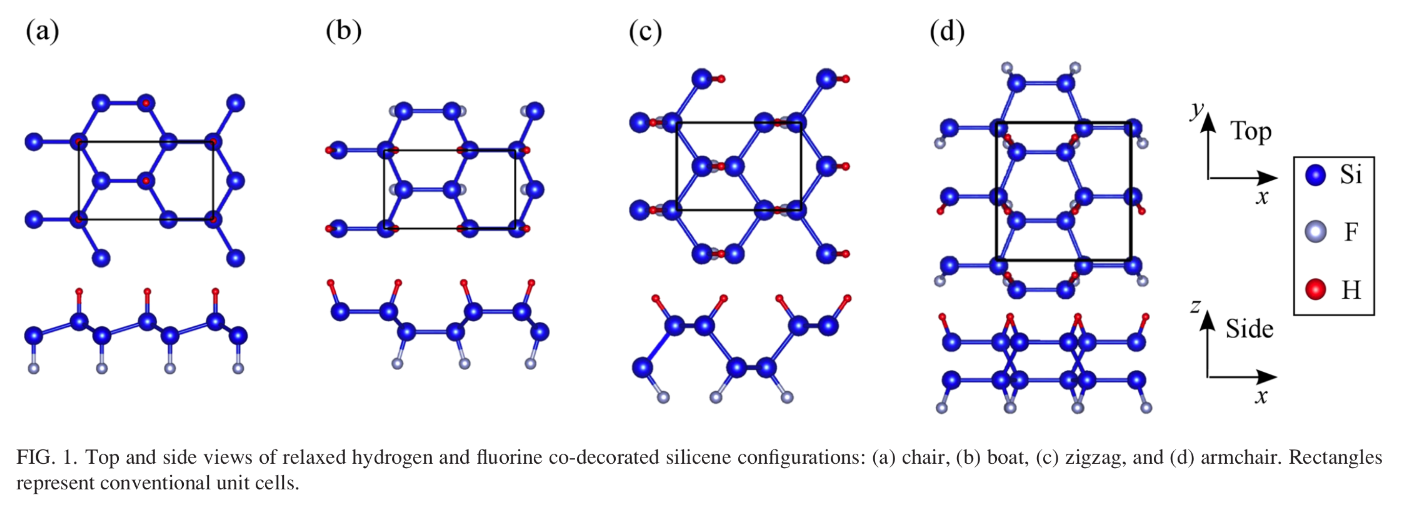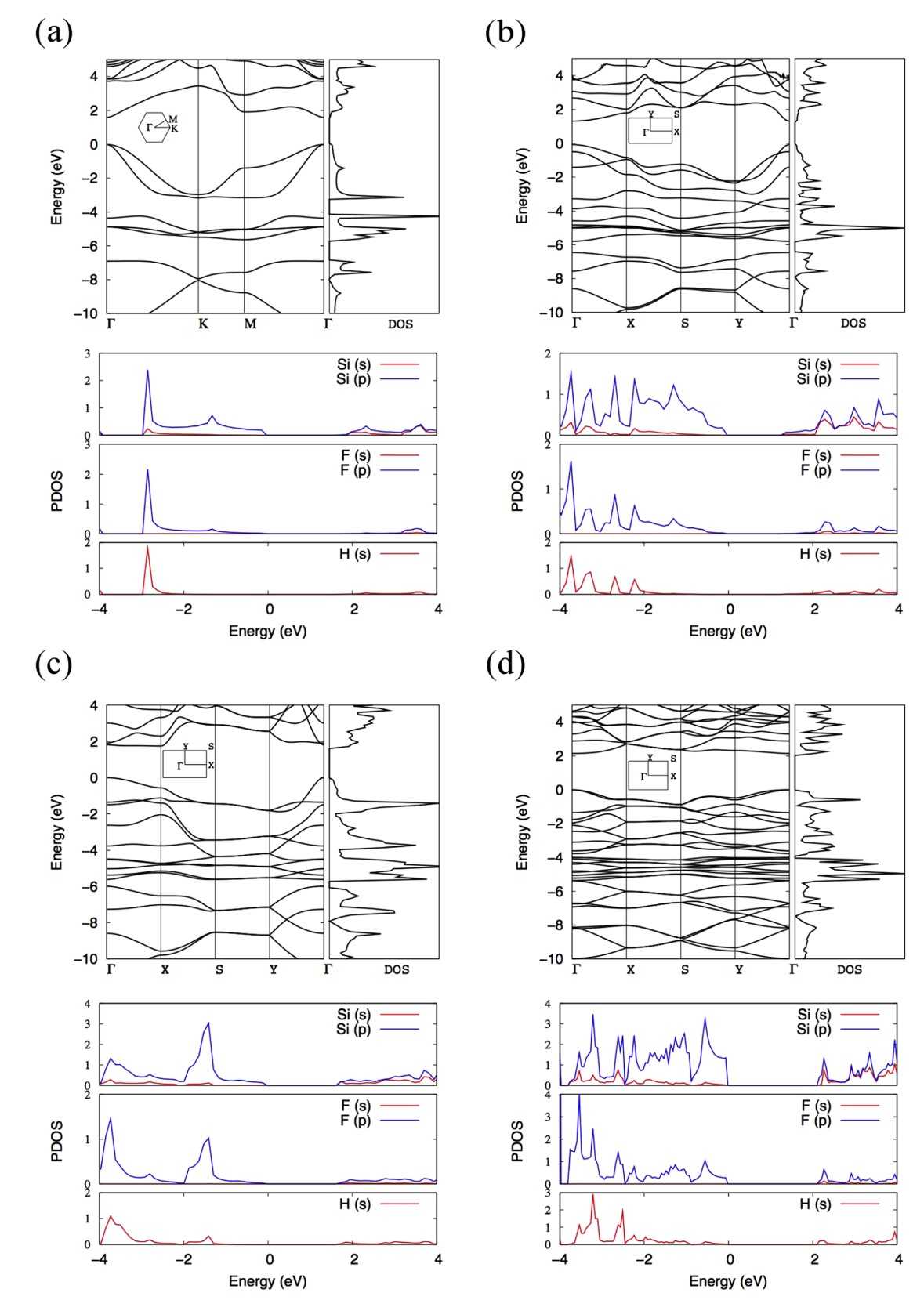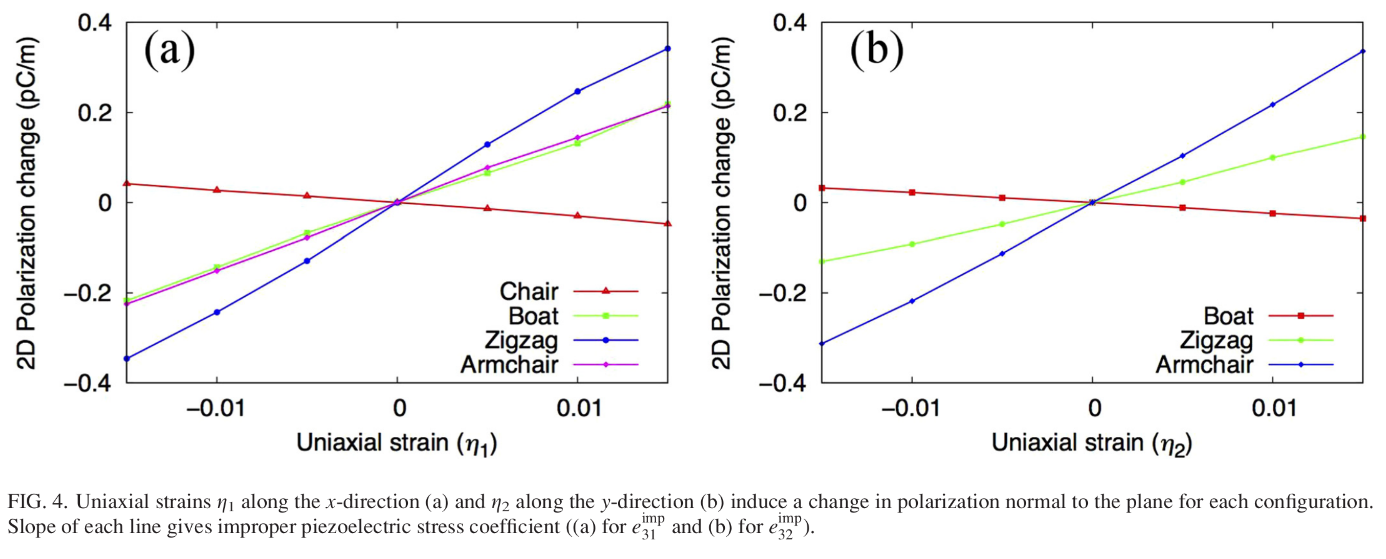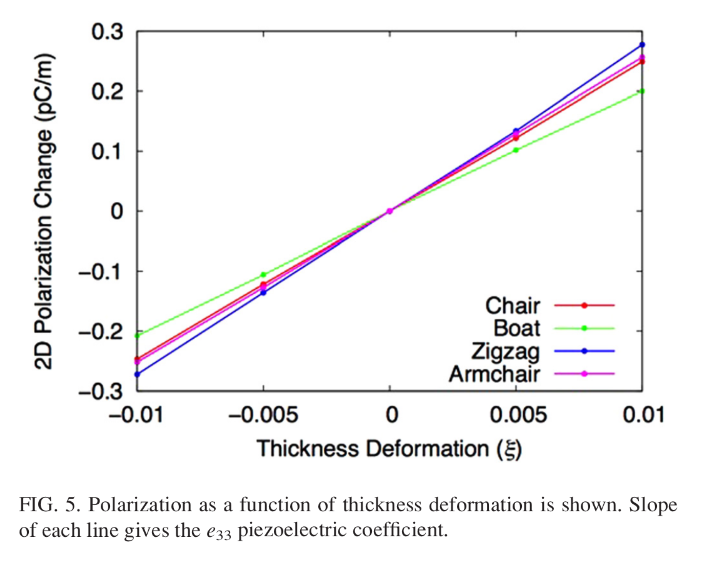Back To Listings





- First authors: Mohammad Noor-A-Alam
- Corresponding authors: Young-Han Shin
- Whole authors: Mohammad Noor-A-Alam, Hye Jung Kim, Young-Han Shin
- Authors from M3L: Hye Jung Kim, Mohammad Noor-A-Alam, Young-Han Shin
A low-buckled silicene monolayer being centrosymmetric like graphene, in contrast to a piezoelectric hexagonal boron nitride (h-BN), is not intrinsically piezoelectric. However, based on first principles calculations, we show that chemical co-decoration of hydrogen (H) and fluorine (F) on opposite sides of silicene (i.e., one side is decorated with H, while the other one is with F) breaks the centrosymmetry. Redistributing the charge density due to the electronegativity difference between the atoms, non-centrosymmetric co-decoration induces an out-of-plane dipolar polarization and concomitant piezoelectricity into non-piezoelectric silicene monolayer. Our piezoelectric coefficients are comparable with other known two-dimensional piezoelectric materials (e.g., hydrofluorinated graphene/h-BN) and some bulk semiconductors, such as wurtzite GaN and wurtzite BN. Moreover, because of silicene's lower elastic constants compared to graphene or h-BN, piezoelectric strain constants are found significantly larger than those of hydrofluorinated graphene/h-BN. We also predict that a wide range of band gaps with an average of 2.52 eV can be opened in a low-buckled gapless semi-metallic s
Authors from M3L

Hye Jung Kim
hjungkim88@gmail.com
Mohammad Noor-A-Alam
noor.uou@gmail.com



